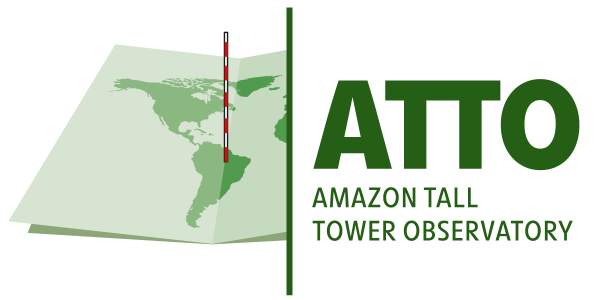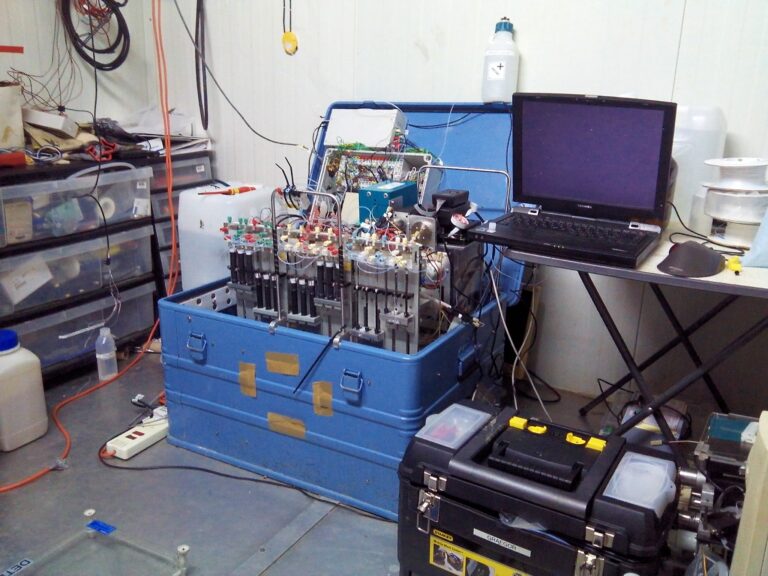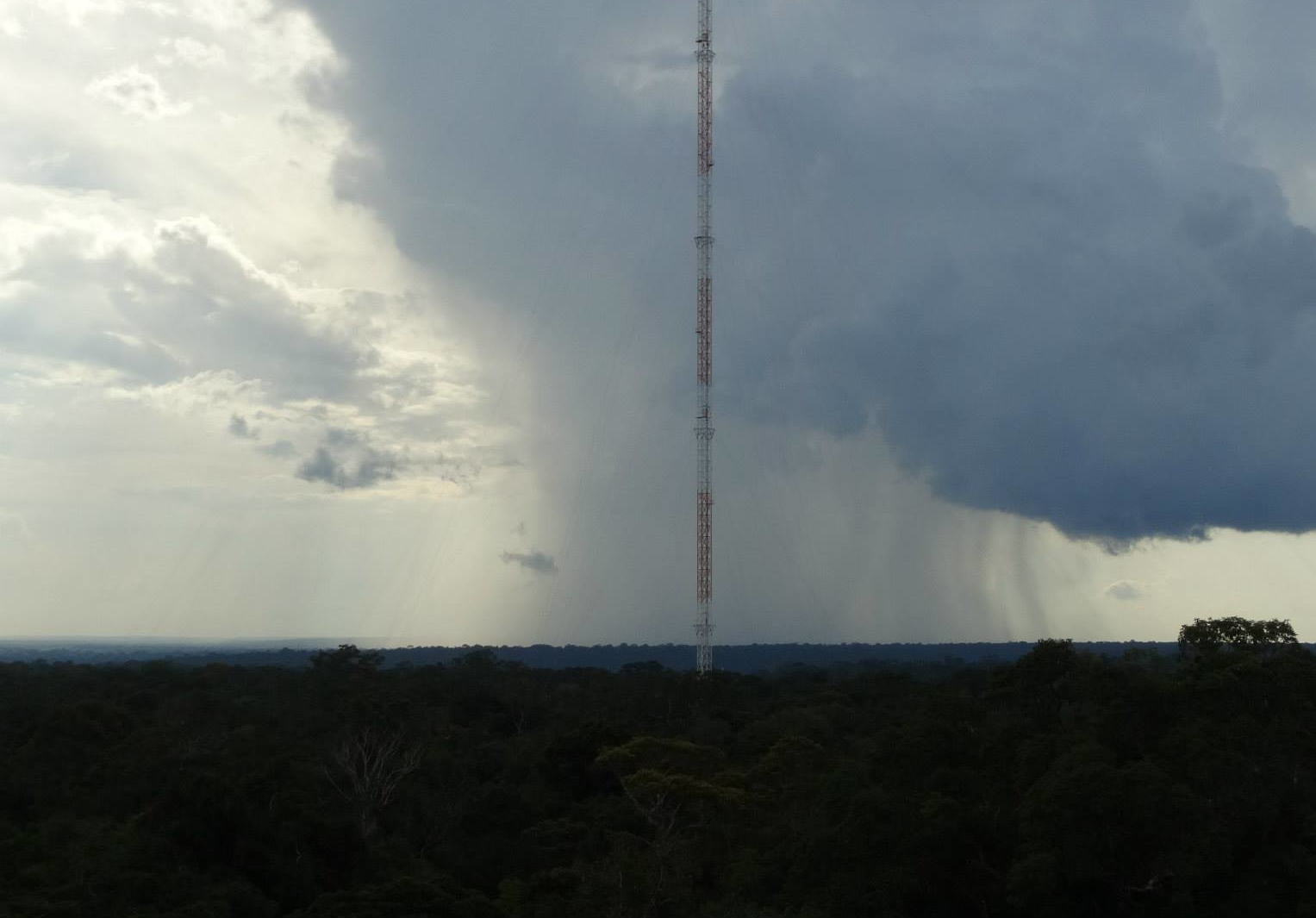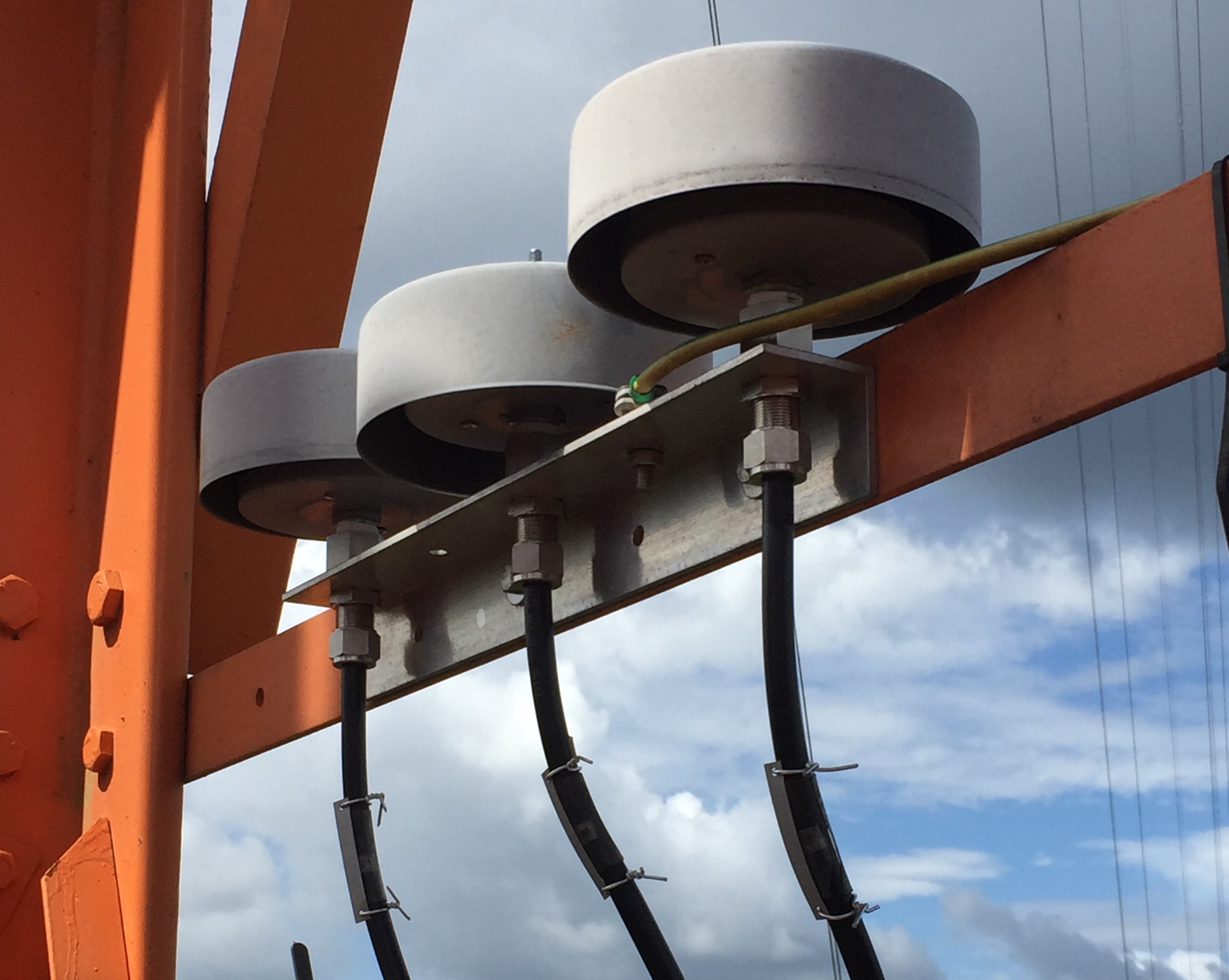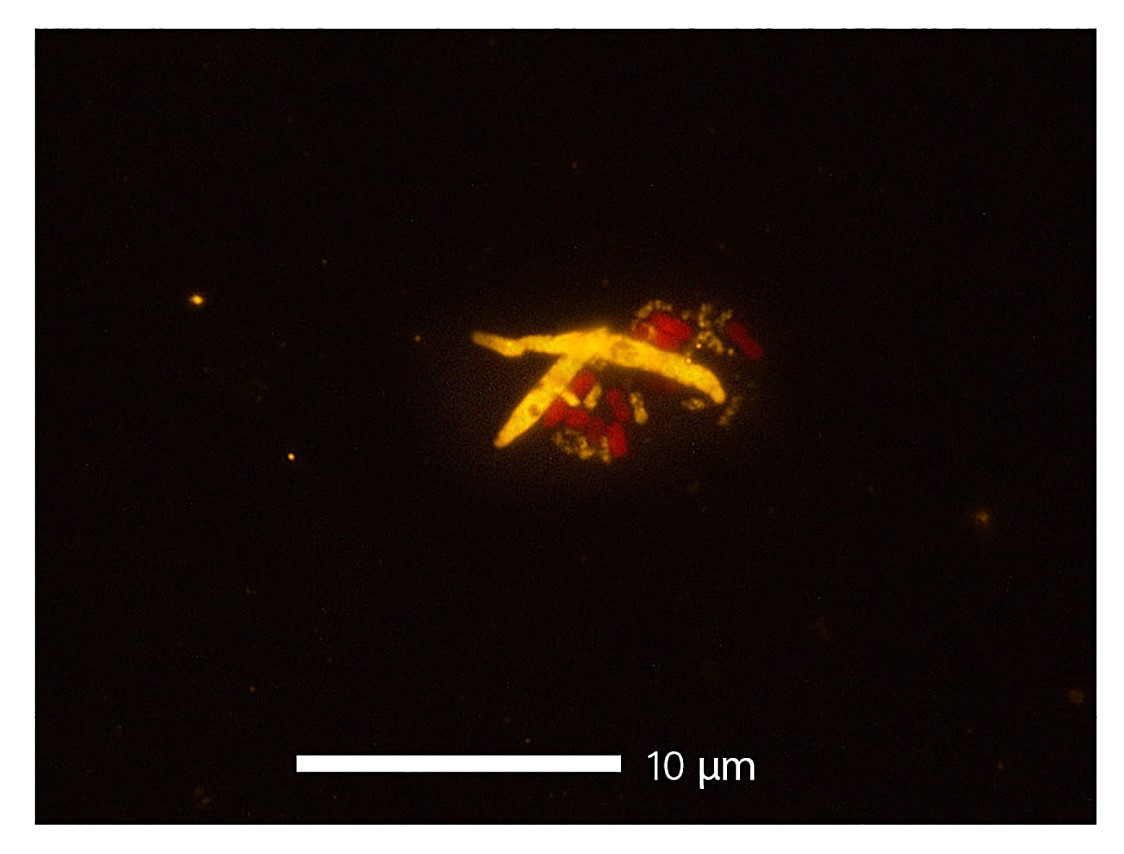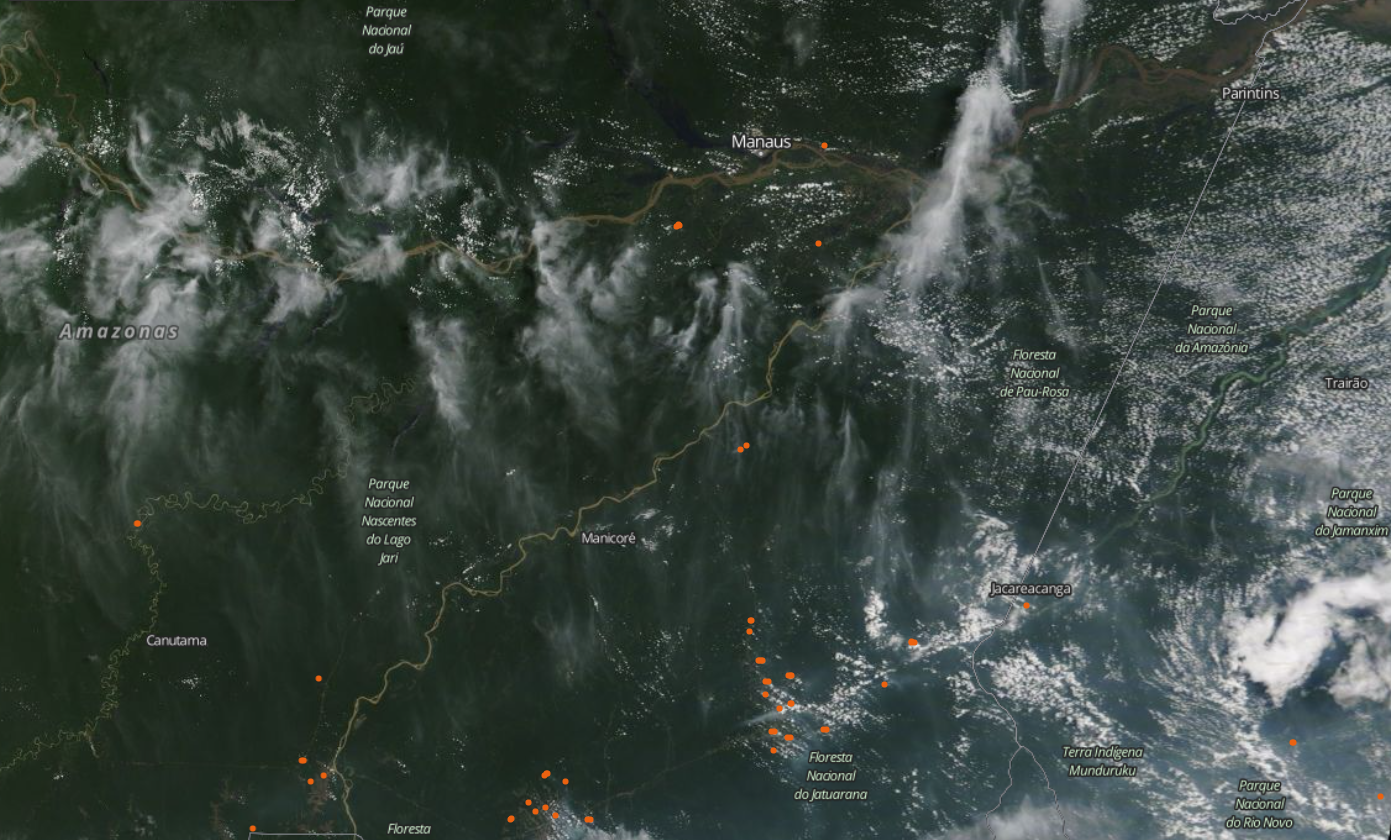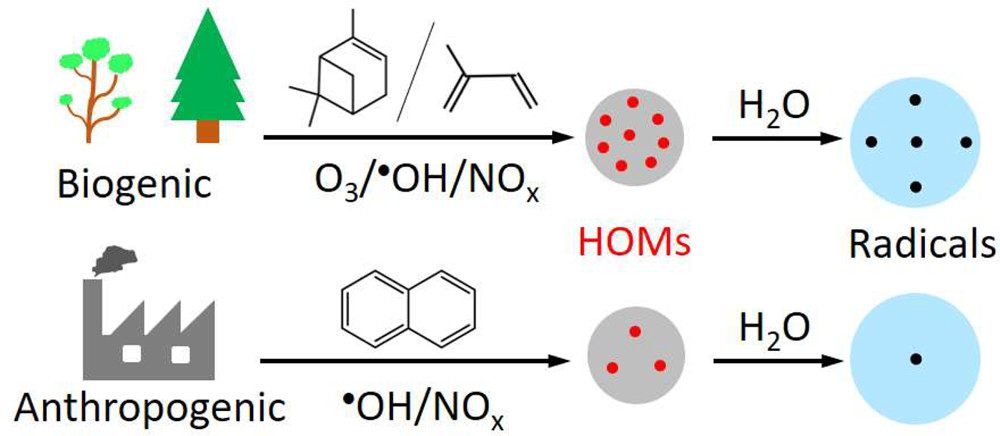Scientists developed a new model to access nitrogen exchange between atmosphere and biosphere based on observations at ATTO. This model includes parameters controlling both nitrogen deposition and emissions in tropical forests.
Nitrogen in the environment
Development of a bidirectional model
Robbie Ramsay and his colleagues now measured nitrogen fluxes (mainly NH3 and NH4+) at ATTO. This remote site offers the opportunity to collect data free of agricultural pollution and at a tropical rainforest site with unique meteorological conditions. They collected data for an entire month in the dry season with hourly resolution, as well as several meteorological parameters. And indeed, the team found bidirectional transport: On the one hand, deposition of nitrogen occurs on plant surfaces, thereby removing it from the atmosphere. On the other hand, they also found emissions. Their data indicate that they might be emitted from plant stomata when they are open for photosynthesis.
The scientists then used their data to develop a model that would simulate their observations. Such local and regional models are required to quantify how much nitrogen is deposited from the atmosphere in the Amazon rainforest, and how much the forest emits back. Previous models had used relative humidity or vapor pressure deficit to simulate surface exchange. The model by Robbie Ramsay and his co-authors instead used a novel leaf wetness parameter that captures variation with greater accuracy and defines a set of parameters necessary to capture the variation in the data obtained at ATTO.
The study “Measurement and modelling of the dynamics of NH3 surface–atmosphere exchange over the Amazonian rainforest” by Ramsay et al. is available Open Access in Biogeosciences.
Similar articles
Direct measurements of OH radicals are rare and difficult to achieve. However, since they react with BVOCs, Ringsdorf et al. inferred them from isoprene measurements at ATTO. To do so, they applied a technique called ‘Dynamical Time Warping’ from the field of speech recognition. Akima Ringsdorf et al. published the study “Inferring the diurnal variability of OH radical concentrations over the Amazon from BVOC measurements” Open Access in Nature Scientific Reports.
More soot particles enter the central Amazon rainforest from brush fires in Africa than from regional fires at certain times.
In a new study, Marco A. Franco and his colleagues analyzed when and under what conditions aerosols grow to a size relevant for cloud formation. Such growth events are relatively rare in the Amazon rainforest and follow and pronounced diurnal and seasonal cycles. The majority take place during the daytime, and during the wet season. But the team also discovered a few remarkable exceptions.
It is long known that aerosols, directly and indirectly, affect clouds and precipitation. But very few studies have focused on the opposite: the question of how clouds modify aerosol properties. Therefore, Luiz Machado and his colleagues looked into this process at ATTO. Specifically, they studied how weather events influenced the size distribution of aerosol particles.
High-quality atmospheric CO2 measurements are sparse across the Amazon rainforest. Yet they are important to better understand the variability of sources and sinks of CO2. And indeed, one of the reasons ATTO was built was to obtain long-term measurements in such a critical region. Santiago Botía and his colleagues now published the first 6 years of continuous, high-precision measurements of atmospheric CO2 at ATTO.
The Amazon rain forest plays a major role in global hydrological cycling. Biogenic aerosols, such as pollen, fungi, and spores likely influence the formation of clouds and precipitation. However, there are many different types of bioaerosols. The particles vary considerably in size, morphology, mixing state, as well as behavior like hygroscopicity (how much particles attract water) and metabolic activity. Therefore, it is likely that not only the amount of bioaerosols affects the hydrological cycle, but also the types of aerosols present.
Ramsay et al. measured inorganic trace gases such as ammonia and nitric acid and aerosols in the dry season at ATTO. They are to serve as baseline values for their concentration and fluxes in the atmosphere and are a first step in deciphering exchange processes of inorganic trace gases between the Amazon rainforest and the atmosphere.
Soot and other aerosols from biomass burning can influence regional and global weather and climate. Lixia Liu and her colleagues studied how this affects the Amazon Basin during the dry season. While there are many different interactions between biomass burning aerosols and climate, they found that they overall lead to fewer and weaker rain events in the Amazon rainforest.
In a new study, Dr. Haijie Tong and co-authors studied a subset of PM2.5, the so-called highly oxygenated molecules (HOMs) and its relationship with radical yield and aerosol oxidative potential. They analyzed fine particulate matter in the air in multiple locations. This including the highly polluted megacity Bejing and in the pristine rainforest at ATTO. They wanted to get insights into the chemical characteristic and evolutions of these HOM particles. In particular, they wanted to find out more about the potential of HOMs to form free radicals. These are highly reactive species with unpaired electrons.
Wu et al. collected and analyzed aerosols in two locations: the city of Manaus, a large urban area in Brazil, and the ATTO site in the heart of the forest. The aerosol compositions varied largly. At ATTO most aerosols were emitted by the forest itself, while in Manaus, anthropogenic aerosols were very common. The results were published in ACP.
